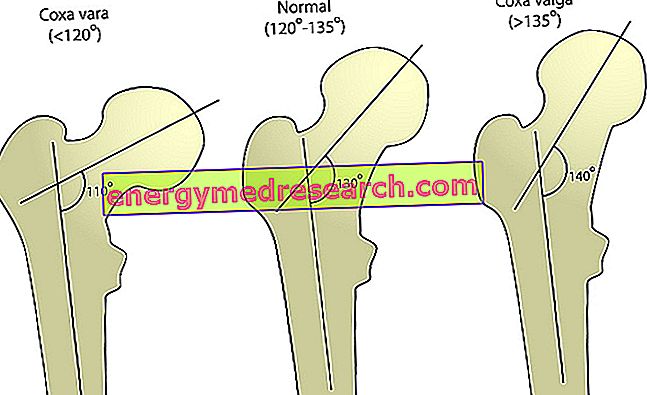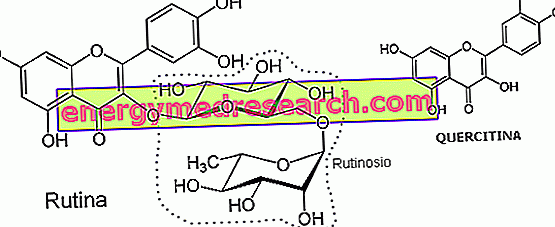What is Provolone del Monaco?
Provolone del Monaco is the name of a caciocavallo cow cheese, typical Italian, in particular from the city of Naples (Campania region). This food product has DOP recognition (Protected Designation of Origin) and the production area includes: Naples metropolitan area, Agerola, Casola di Napoli, Gragnano, Lettere, Massa Lubrense, Meta, Piano di Sorrento, Pimonte, Sant'Agnello, Sorrento, Santa Maria la Carità and Vico Equense.

Provolone del Monaco is a type of caciocavallo, although the production phases are slightly different. History and origin of the name are curious and characteristic.
Nutritional properties
Nutritional characteristics of the Provolone del Monaco
Provolone del Monaco is a derivative of milk belonging to the II fundamental group of foods. It is very caloric and the energy comes mainly from lipids, followed by proteins and traces of carbohydrates.
Fatty acids are mainly saturated, peptides with high biological value and simple carbohydrates. Cholesterol is abundant and fibers are absent.
The cheese does not contain gluten, but is rich in histamine. The only allergens are made from cow's milk protein. Among the minerals, significant levels of sodium, calcium, phosphorus and potassium are noted. As far as vitamins are concerned, those of group B (especially B2 or riboflavin) and vitamin A are present in discrete concentrations.
Provolone del Monaco is a food that does not lend itself to the clinical nutrition of the overweight subject and suffering from metabolic pathologies, in particular hypercholesterolemia and primary sodium sensitive hypertension. It provides a quantity of calcium and phosphorus very useful for the growth and maintenance of bone mass in critical age; it is therefore an adequate food for children and the elderly (especially menopausal women). It brings so much lactose that it is harmless to most intolerant to milk sugar. On the contrary, this cheese could be annoying for histamine-sensitive.
It is to be avoided in the vegan and vegetarian philosophy (due to the presence of animal rennet).
The average portion of Provolone del Monaco is about 80 g.
Use and Recipes
Culinary uses of Provolone del Monaco
Provolone del Monaco is a food intended mainly to be enjoyed as an appetizer, a dish or a dessert. It is therefore a table cheese, although, with long aging, it is often used to be grated on first courses.
Provolone del Monaco is also used as an ingredient in many recipes, especially first and second courses. The most famous are: paccheri from Gragnano with aubergines and provolone, spaghetti alla Nerano, ravioli from provolone, sliced beef with provolone in flakes, risotto with mussels and provolone, pasta with monkfish and provolone, sliced swordfish with provolone etc.

Oenological combination of Provolone del Monaco
Provolone del Monaco, consumed alone, can be accompanied with red wines such as Taurasi and Campi Flegrei Piedirosso. More generally, the following are also adequate: Red toast, Cerasuolo di Vittoria, Cirò rosso, Marsala Vergine, Ramandolo, Recioto di Soave, Salice Salentino rosso and Torcolato di Breganze.
Production
Outline of production
Provolone del Monaco is a whole cow's milk cheese (at least 20% from the Agerolese breed), raw, fat, stringy, semi-hard and seasoned.
The production of Provolone del Monaco can be summarized as follows:
- Heating to 36-38 ° C of whole raw milk
- Adding rennet in goat paste or veal liquid or both, with at least 50% coming from the kid. Coagulation is rennet, without live lactic ferments, and ends in 40-60 '
- Breaking the curd up to obtain small caseous lumps (about those of a corn seed)
- Rest and separation of the whey from the curd (purge); at this point, the lumps are deposited on the bottom of the boiler
- Temperature increase to 48-52 ° C (cooking)
- Extracting the curd, which is placed in perforated steel baskets or in canvases, where it drains the serum and begins the maturation
- When the dough is ripe (elastic and resistant), it is cut into strips and is hand-row, shaping it into forms in water at 85-90 ° C
- The molded shapes are placed in cold water (8-10 hours for each kilogram of product)
- They are then tied in pairs and hung on special supports
- The first 20 days of seasoning take place in rooms at room temperature; subsequently, the forms are transferred to warehouses at 8-15 ° C (or caves) for at least 6 months, during which they are subjected to washing, cleaning of molds and oiling with extra virgin olive oil.
Compared to most caciocavallo, Provolone del Monaco is characterized by:
- Use of at least 20% of the milk milked by Agerolese
- More curd cooking
- Absence of lactic ferments and preservatives
- Slow rest of the curd
- "Long melon" shape (without head)
- Maturation, even in caves, for at least 6 months.
History
Historical notes on the Provolone del Monaco
The production of Provolone del Monaco dates back to a period between the end of the 1700s and the beginning of the 1900s. In the XVIIIth century, due to the urban expansion of Naples, the agricultural community of Vomero moved up to the Lattari Mountains. This area, thanks to the extension of the pastures, lends itself to the breeding of cows and to the production of milk and cheese. For about a century, this new pastoral community refined the cheese making technique and began to use it as a source of economic support. Since the sale of the cheese required a long and sometimes difficult journey to the market in Naples, where the buyers also came from the district to buy the now known caciocavallo, the shepherds covered themselves with heavy and typical capes that distinguished them from the other merchants ( see below: Curiosity).
After the proposal of 24 February 2005, in 2010 Provolone del Monaco was recognized as a Protected Designation of Origin (DOP).
Curiosity
Curiosities on the Provolone del Monaco
The name "Provolone del Monaco" is inspired by the coat that the shepherds wore (especially in the cold period) during the journey from the hills of Vico Equense to the capital, where the food market took place.



